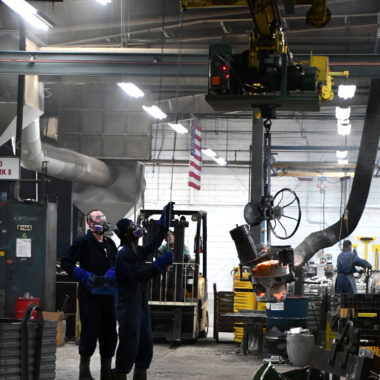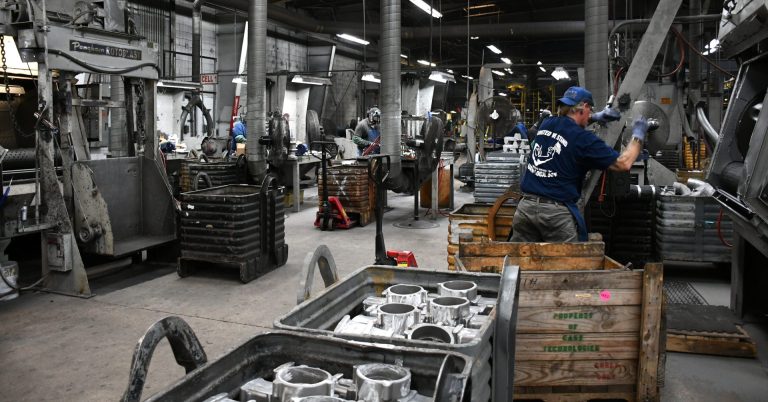The Ultimate Overview to Aluminum Casting: Professional Insights and Ideal Practices
The Ultimate Overview to Aluminum Casting: Professional Insights and Ideal Practices
Blog Article
Dive Into the Globe of Light Weight Aluminum Casting: Understanding the Different Approaches
Light weight aluminum casting is a basic process in the manufacturing sector, with numerous approaches used to create elaborate and exact components. From the conventional sand spreading technique to the advanced die spreading procedure, each technique supplies one-of-a-kind advantages depending on the demands of the task.
Sand Spreading Technique
Sand spreading, a widely-used method in light weight aluminum casting processes, entails developing molds made of compacted sand for putting liquified metal. Once the mold is ready, it is securely placed in a flask and molten light weight aluminum is poured right into the dental caries.
After the steel has cooled down and strengthened, the sand mold and mildew is escaped to reveal the light weight aluminum casting. Sand casting permits the manufacturing of complex shapes and large components that might be tough or costly to produce making use of other techniques. It is also a lasting method as the sand can be reused and used several times, decreasing waste in the casting procedure.
Long-term Mold Technique

One significant advantage of the Permanent Mold Technique is the boosted dimensional accuracy it uses. The steel mold permits tighter tolerances and better information in the final light weight aluminum spreadings compared to sand spreading approaches. This accuracy makes it a favored choice for applications where limited dimensional control is important, such as in the aerospace and automobile sectors.

Pass Away Casting Process

Financial Investment Casting Technique
Making use of a precision spreading approach, Investment Casting Approach entails developing elaborate light weight aluminum elements by pouring liquified metal right into a ceramic mold. This process, additionally known as lost-wax spreading, begins with the creation of a wax pattern of the preferred part (aluminum casting).
Financial investment spreading is typically utilized for making components in markets where tight tolerances and complex layouts are required, such as Visit Your URL aerospace, automobile, and clinical tools. The versatility and precision of the Investment Casting Technique make it a beneficial technique in the world of aluminum casting.
Lost Foam Casting Technique
Having explored the elaborate precision of Financial investment Casting Strategy, the emphasis now shifts to the innovative method of Lost Foam Spreading in light weight aluminum element manufacturing. Lost Foam Spreading, additionally understood as evaporative pattern casting, is a modern strategy where a foam pattern of the wanted part is created and after that covered with a refractory material.
Furthermore, Lost Foam Spreading is an economical procedure as it decreases the demand for cores and allows for the manufacturing of lightweight elements. Regardless of its advantages, Lost Foam Spreading requires mindful control of the casting process to protect against problems and make certain high quality parts.
Conclusion
Finally, aluminum casting uses a selection of check my site methods such as sand casting, long-term mold and mildew technique, die spreading, financial investment spreading, and lost foam casting. Each technique has its very own benefits and applications, making aluminum casting a versatile and commonly utilized procedure in numerous industries. Understanding the differences in between these approaches is crucial in selecting the most appropriate spreading strategy for details manufacturing requirements.
Sand casting, a widely-used method in aluminum casting processes, involves producing molds made of compacted sand for pouring molten metal. aluminum casting.The Long-term Mold Method, like sand casting, is one more common technique utilized in aluminum casting processes, offering distinct benefits in terms of mold and mildew reusability and dimensional accuracy. The metal mold and mildew permits for tighter resistances and better information in the final aluminum castings contrasted to sand spreading approaches. The 2 primary types of die casting are cold chamber pass away spreading and hot chamber die casting, each ideal for various kinds of aluminum alloys.In conclusion, aluminum spreading uses a range of methods click for more such as sand spreading, irreversible mold technique, pass away spreading, financial investment spreading, and lost foam spreading
Report this page